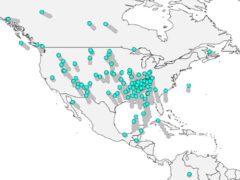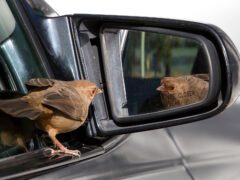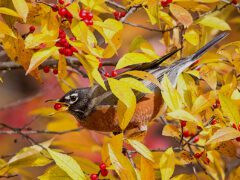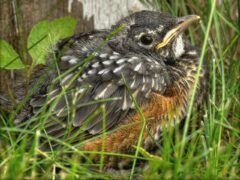The Four Keys to ID
- Size & Shape
A plump chickenlike bird with a short neck, small head, small bill, and rather large, feathered feet.
Relative Size
Slightly larger than a White-tailed Ptarmigan, slightly smaller than a Willow Ptarmigan.

 crow-sized
crow-sizedMeasurements
- Both Sexes
- Length: 12.6-15.8 in (32-40 cm)
- Weight: 15.5-22.6 oz (440-640 g)
© Mark Davidson / Macaulay Library
- Color Pattern
- Behavior
- Habitat
Regional Differences
Ornithologists recognize many subspecies around the world. In general, they fall into two broad groups, one that nests in western Europe and northern Scotland (the “muta” group), the other in Asia, Iceland, and North America (the “rupestris” group). The populations that nest the farthest north, and those on the Aleutian and other maritime islands, tend to be the largest and darkest. It’s been suggested that two subspecies should be given full species status: the evermanni subspecies, found on Attu and Agattu in the Aleutian Islands, and welchi, which inhabits western Newfoundland. Because both differ strongly in plumage and size from other Rock Ptarmigan, evermanni and welchi were originally described as full species in the nineteenth century, by ornithologists Daniel Giraud Elliot and William Brewster.
























